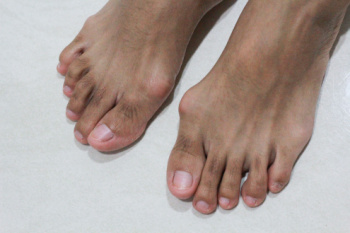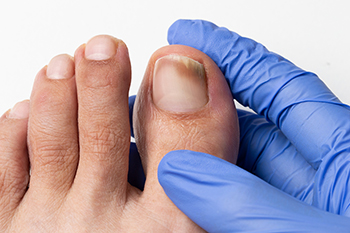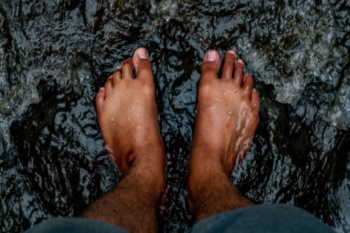
Bunions, medically referred to as hallux valgus, occur when the joint at the base of the big toe begins to protrude, often causing discomfort or difficulty in wearing shoes. A bunion develops as the tip of the big toe leans toward the other toes, leading to a wider foot structure. Symptoms of bunions include pain in the affected joint, swelling, redness, or numbness in the toes. In severe cases, bunions may limit mobility or contribute to other deformities like hammertoes. Risk factors include genetic predisposition, rheumatoid arthritis, or structural issues like flat feet. Wearing improper footwear, such as high heels or narrow shoes, can worsen the problem. A podiatrist can diagnose and manage bunions by evaluating the foot's alignment and identifying the severity of the condition. This foot doctor may recommend custom orthotics, adjustments to footwear, or, in persistent cases, surgery to correct the deformity and alleviate symptoms. If you have problems with bunions, it is suggested that you schedule an appointment with a podiatrist for a diagnosis and treatment options.
If you are suffering from bunions, contact one of our podiatrists of Westside Podiatry Center, LLP. Our doctors can provide the care you need to keep you pain-free and on your feet.
What Is a Bunion?
A bunion is formed of swollen tissue or an enlargement of boney growth, usually located at the base joint of the toe that connects to the foot. The swelling occurs due to the bones in the big toe shifting inward, which impacts the other toes of the foot. This causes the area around the base of the big toe to become inflamed and painful.
Why Do Bunions Form?
Genetics – Susceptibility to bunions are often hereditary
Stress on the feet – Poorly fitted and uncomfortable footwear that places stress on feet, such as heels, can worsen existing bunions
How Are Bunions Diagnosed?
Doctors often perform two tests – blood tests and x-rays – when trying to diagnose bunions, especially in the early stages of development. Blood tests help determine if the foot pain is being caused by something else, such as arthritis, while x-rays provide a clear picture of your bone structure to your doctor.
How Are Bunions Treated?
- Refrain from wearing heels or similar shoes that cause discomfort
- Select wider shoes that can provide more comfort and reduce pain
- Anti-inflammatory and pain management drugs
- Orthotics or foot inserts
- Surgery
If you have any questions, please feel free to contact one of our offices located in Liverpool, Camillus, Skaneateles, Oswego, and Cicero, NY . We offer the newest diagnostic and treatment technologies for all your foot care needs.









